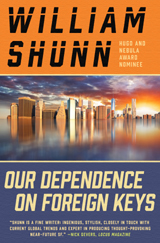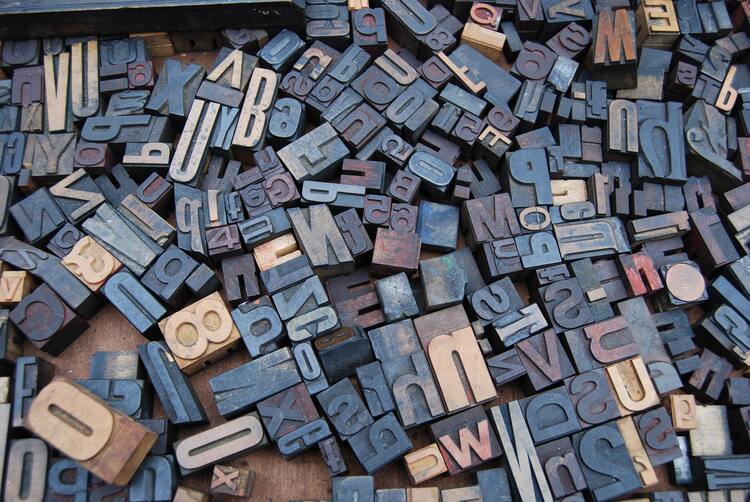
Tylogram™ is a game with two distinct parts—forming words from the grid and then squeezing every last point out of them. One of the most common mistakes players make is trying to do both at the same time.
We often see players looking for the best arrangement of tiles for scoring a specific word before entering that word, but this doesn't gain you anything. Why not? Because word scores are not static in Tylogram™.
When you slide the tiles, all your word scores change. The object of the puzzle is to find the arrangement of tiles that gives the highest score for your entire solution set, not for one specific word at a time.
To offer an example, let's say you have the tiles shown below and you spot the word grotto. Recognizing that this word contains one r, two o's and two t's, you carefully arrange the tiles so that grotto will give you the highest score possible, 31 points:
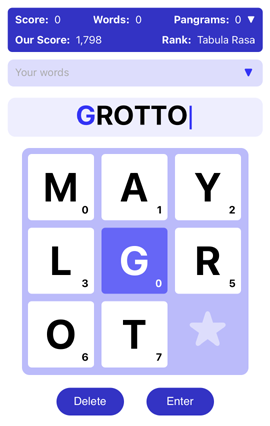
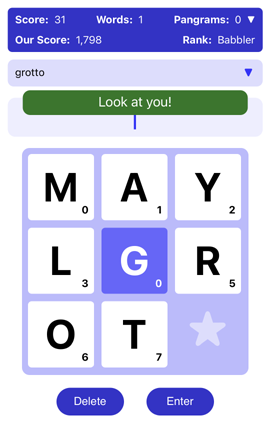
So far so good. Next, you spot the word grammar. You note that this word contains two r's, two a's and two m's. Again, you arrange the tiles so that grammar will yield the highest possible score, 36 points:
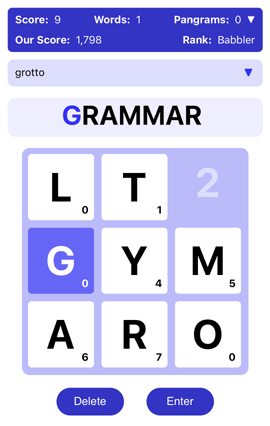
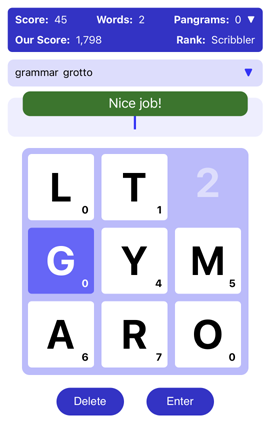
But look what's happened! By rearranging the tiles to accommodate grammar, the score for grotto has dropped all the way to 9 points!
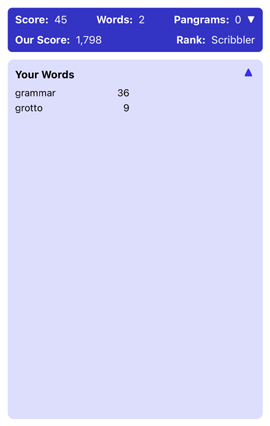
This illustrates the problem with trying to arrange your tiles to suit one particular word. Because word scores are not locked in, changing the tiles to fit one word will inevitably bring down the value of other words.
The challenge of Tylogram™ is to find an arrangement that maximizes your word scores as a whole. For that reason, it's better to wait until later in the game to do a lot of your rearranging, when you have a larger set of words to work with. Then, finding the right arrangement can have a huge effect on your score.




